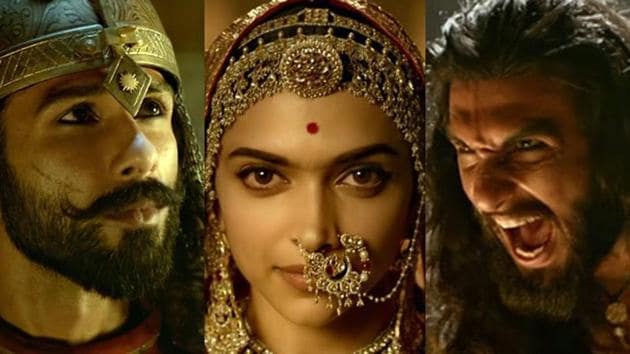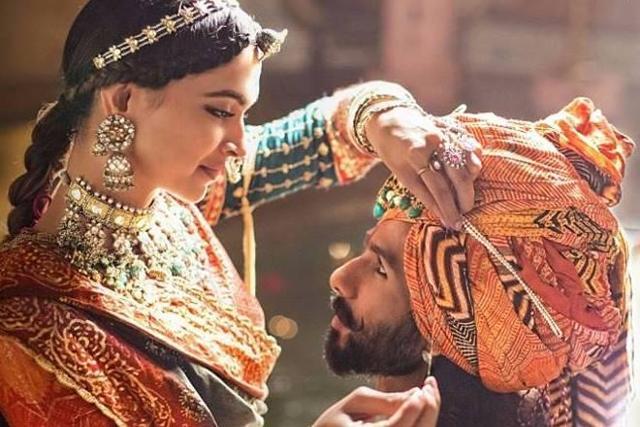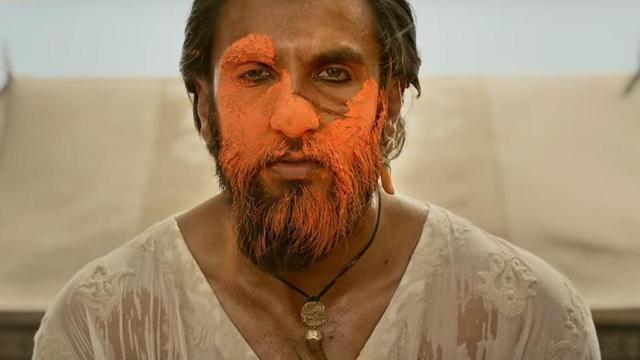Disclaimers of ‘Padmaavat’ and the politics of slogans: Now showing at a Chandigarh theatre
There are times when you absolutely love the fact that you live in Chandigarh, the headquarters of a part of the world that often goes against the grain. This was one of those times.
When two guys in the row ahead of us in the theatre went, “Inquilaab zindabad,” I thought they were protesting the price of popcorn. I would have joined in, but there were bigger worries facing us — the screen had gone pink and blue for some reason. The tech defect made us miss the all-important ad in which Rahul Dravid scolds us for smoking. The national anthem made us feel slightly better. But, would we have to watch ‘Padmaavat’ in this pop pink-and-blue hue?

Before the credits rolled, though, it was finally normal, all-colour 3D. As the censor board certificate flashed on the screen, the Inquilaab guys were back in action, giggling and mocking the protesters who’d made this movie more about free speech and less about its own misogyny. “Karni Sena…,” roared one of them, letting out a guffaw in the process. Several joined in, guffawing along, “Zindabad!”
As the credits rolled on, the slogans got weirder, like Punjabi humour at a cousin’s wedding. “Bhansali, tum aage badho… hum tumhare saath hain!” went one, pledging solidarity with the director, Sanjay Leela Bhansali. Some others went, “PUSU party zindabad!” wishing a long life for the Panjab University Student Union! It went quiet for a second or two, and then we heard, “Jaikara, Sheran Wali Da...”, and the crowd completed the devotional chant that had nothing to do with anything here: “Bol saache darbar ki jai!”

It got repetitive, gigglier, and funnier too, before the movie actually began and the crowd realised it was time to let Bhansali do his thing. Their point had been made: underlining the ridiculousness of a protest drama carried out by useful lackeys of those who rule us.
There are times when you absolutely love the fact that you live in Chandigarh, the headquarters of a part of the world that often goes against the grain. This was one of those times. Not that we don’t have our own ridiculous protests against movies over flimsy, religious reasons; but our passionate Punjabi mix of a parochial perspective and a revolutionary spirit leads to unusual results.
The movie was nothing unusual. Bhansali went for a plot much too old and familiar: A noble Hindu king attacked over a woman by a tyrant Muslim, and the woman preferring to die than be taken by the tyrant.
But, in the politically charged times in which we live, this old plot is being noticed for what it is – simplistic demonisation of one despot, and convenient whitewashing of another.

The visuals, of course, were stunning. I won’t spoil the fun by mentioning one scene in particular, in which Alauddin Khilji disappears into a cloud of dust raised by two fighting cavalries. Oh, sorry, I won’t spoil the fun I said.
What’s not as much fun is a narrative that plays so much to the gallery that you succumb to a conspiracy theory in your head: Maybe, the whole protest started as a PR exercise but spiralled out of control.
It’s no rocket science that the so-called Rajput groups are only a front for our beloved right wing, a species that defies and denies its own evolution. But what were they protesting against?
Did they have a problem with meat-eating shown as a symbol of savagery, and women portrayed as willing carriers of the patriarchal interpretations of bravery and sacrifice? Did the Sena not like how the screen was all red and gold every time their fair Raja saab appeared? And that everything about Khilji was immoral, thus dark and dirty? Bhansali has mocked Khilji’s bisexuality too. How much more could he have done to pander to everything that the right wing wants us to believe as history? A movie so devoid of grey shades or engagement with its subject that the money could better have been spent on a sky-high statue of some guy!
I don’t mean to be rude, you know. But is it a sin to feel sadistic pleasure when those who feed a spectacular monster with gaiety end up being devoured by it?
Back in the theatre, no slogans were raised as the end credits rolled. Why did everyone appear shocked? I guess that not many of us had paid enough attention to a disclaimer at the beginning: This movie does not glorify the practice of sati. Yeah, right!
Writer tweets at @aarishc | Email: aarishc@gmail.com





